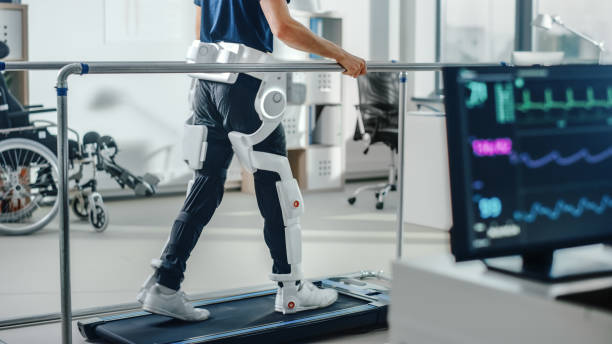Innovative Stroke Recovery Devices for Home Rehab
In 2025, new stroke recovery devices designed for home rehabilitation are making therapy more accessible for patients. These technologies, including mobility aids, smart sensors, and muscle stimulation tools, may help support physical recovery and independence between clinical visits. While progress varies by individual, home-based rehab options can complement professional therapy and improve consistency in recovery efforts. This information is for educational purposes only and does not replace professional medical advice.

Stroke recovery is a complex process that often extends well beyond the initial hospital stay. For many survivors, the real work begins at home, where consistent rehabilitation can make a significant difference in regaining lost abilities. Recent advancements in technology have introduced a variety of devices specifically designed to support home-based therapy, providing patients with tools that promote recovery while reducing the need for frequent clinic visits. Understanding what these devices offer, how they function, and their potential limitations is essential for patients and caregivers navigating the rehabilitation journey.
Overview of Stroke Recovery Devices
Stroke recovery devices encompass a wide range of technologies aimed at helping patients regain motor skills, improve balance, enhance cognitive function, and rebuild strength. These tools include robotic exoskeletons for limb movement, electrical stimulation units that activate weakened muscles, virtual reality systems for immersive therapy sessions, and wearable sensors that track progress in real time. Some devices focus on upper extremity rehabilitation, such as hand and arm trainers, while others target lower body function to improve walking and balance. The diversity of available options means that patients can often find solutions tailored to their specific recovery needs and goals.
How Home Rehab Technology Works
Home rehabilitation technology operates through various mechanisms designed to stimulate neural pathways and encourage muscle reactivation. Functional electrical stimulation devices send mild electrical pulses to targeted muscles, prompting contractions that help rebuild strength and coordination. Robotic-assisted devices guide limbs through repetitive movements, which is crucial for neuroplasticity—the brain’s ability to rewire itself after injury. Virtual reality platforms create engaging environments where patients perform therapeutic exercises that feel more like games than traditional therapy, increasing motivation and adherence. Wearable sensors provide feedback on movement quality, range of motion, and progress over time, allowing both patients and healthcare providers to monitor rehabilitation effectiveness and adjust treatment plans accordingly.
Potential Benefits for Stroke Patients
The benefits of using home-based stroke recovery devices extend beyond convenience. Patients can engage in therapy sessions more frequently than they might be able to attend clinic appointments, which is important because repetition is a key factor in recovery. The comfort and familiarity of home can reduce anxiety and stress, creating a more relaxed environment for focused rehabilitation. Many devices offer customizable difficulty levels, allowing patients to progress at their own pace and adjust exercises as they improve. Real-time feedback helps users understand their performance and stay motivated, while the ability to track progress over weeks and months provides tangible evidence of improvement. Additionally, home rehabilitation can reduce transportation burdens and associated costs, making consistent therapy more accessible for many families.
Limitations and Safety Considerations
While home rehabilitation devices offer numerous advantages, they also come with important limitations and safety considerations. Not all devices are suitable for every patient, as the severity and type of stroke can greatly influence which technologies will be effective. Some devices require a certain baseline level of function or cognitive ability to use safely and effectively. Without direct supervision from a therapist, there is a risk of improper use, which could lead to injury or ineffective therapy. Patients with significant balance issues, cognitive impairments, or severe weakness may need caregiver assistance or modified equipment. It is essential to consult with healthcare professionals before purchasing or using any rehabilitation device to ensure it aligns with individual recovery goals and capabilities. Regular follow-up with therapists helps ensure that home exercises complement clinical care rather than replace it.
Patient Guidance and Therapy Resources in 2025
As of 2025, stroke survivors have access to a growing network of resources designed to support home rehabilitation. Many hospitals and rehabilitation centers now offer telehealth consultations, allowing therapists to guide patients remotely and adjust treatment plans based on progress. Online platforms provide instructional videos, exercise libraries, and community forums where patients can connect with others facing similar challenges. Professional organizations and patient advocacy groups offer educational materials on selecting appropriate devices, understanding insurance coverage, and navigating the recovery process. Some manufacturers provide training sessions and customer support to help users maximize the benefits of their devices. Healthcare providers can also recommend specific products based on clinical evidence and patient needs, ensuring that home rehabilitation efforts are both safe and effective.
This article is for informational purposes only and should not be considered medical advice. Please consult a qualified healthcare professional for personalized guidance and treatment.
Moving Forward with Home Rehabilitation
Home-based stroke recovery devices represent a valuable complement to traditional therapy, offering flexibility, increased practice opportunities, and personalized support. While these technologies cannot replace the expertise of trained therapists, they empower patients to take an active role in their recovery journey. By understanding the capabilities and limitations of available devices, consulting with healthcare professionals, and utilizing available resources, stroke survivors can make informed decisions that enhance their rehabilitation outcomes. The combination of innovative technology, professional guidance, and patient dedication creates a comprehensive approach to recovery that extends well beyond the clinic walls, supporting long-term independence and improved quality of life.




